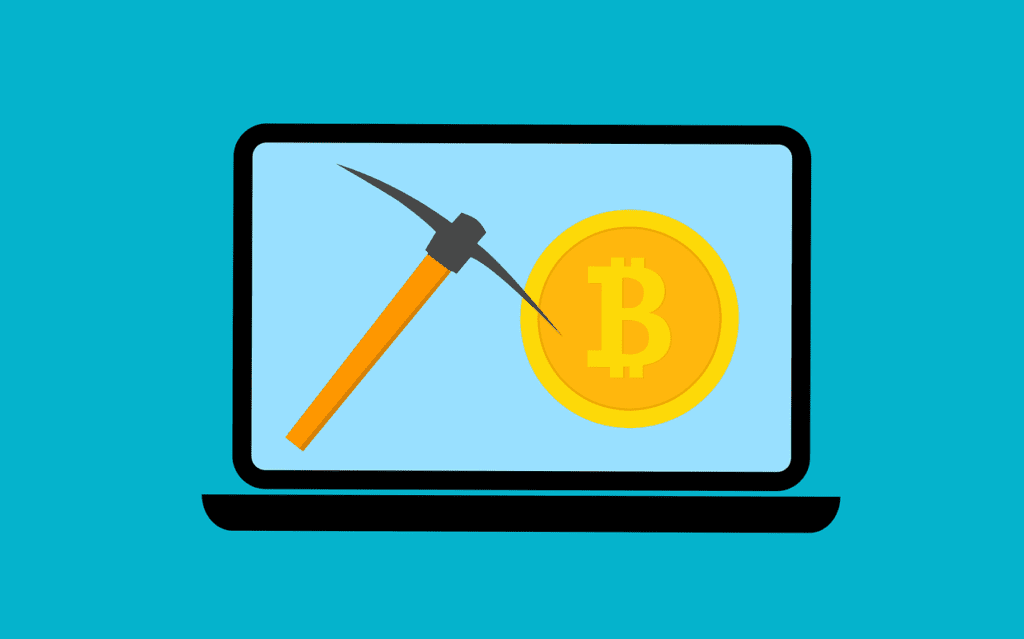Disclosure:
Some of the links on this website are affiliate links, which means that if you click on one of the links and sign up or make a purchase, we may earn a small commission at no additional cost to you. This commission helps support the maintenance and operation of this site.
We only recommend products or services that we believe will provide value to our readers. Our opinions and recommendations are based on our own research and experiences, and we strive to offer honest and unbiased content.
Please note that your support through these affiliate links is greatly appreciated, as it helps us continue to provide quality content and resources.
Thank you for your support!
Getting Started with Crypto Investing
Cryptocurrency investing has become a popular avenue for those looking to diversify their portfolios and explore new financial opportunities. At its core, crypto investing involves buying and selling digital currencies like Bitcoin, Ethereum, and other altcoins on various exchanges. Cryptocurrencies are decentralized and based on blockchain technology, which allows for secure, transparent, and fast transactions. Beyond buying and holding crypto, investors can also engage in staking, where they earn rewards by locking up their assets to support the network, or Bitcoin mining, where they help process transactions and secure the blockchain, earning Bitcoin in return. Mining can be done both physically, with specialized hardware, or virtually through cloud mining services.
While crypto investing offers the potential for high profits, it’s important to recognize the volatility of the market. Prices can fluctuate dramatically in short periods, leading to both significant gains and losses. Some investors adopt a long-term strategy, holding assets over time with the belief that they will increase in value. Others prefer a short-term strategy, capitalizing on the frequent price swings to earn quicker returns. However, this volatility also brings considerable risk, and it’s crucial for new investors to approach the market with caution and awareness.

How to Get Started with Crypto Investing
Cryptocurrency investing has revolutionized the financial world, offering new opportunities for profit, diversification, and innovation. With digital currencies like Bitcoin, Ethereum, and a multitude of altcoins, the crypto market operates on decentralized blockchain technology. This technology ensures that transactions are secure, transparent, and peer-to-peer, cutting out intermediaries like banks. However, crypto investing also comes with its own risks, especially due to the extreme volatility of the market.
1. What Is Crypto Investing?
Crypto investing involves buying, holding, and selling cryptocurrencies through exchanges like Coinbase, or Kraken. Unlike traditional assets like stocks or bonds, cryptocurrencies exist only in digital form and are decentralized, meaning they are not controlled by any central authority like a government or bank. Investors can buy fractions of a cryptocurrency and hold them in digital wallets, hoping that their value will increase over time.
In addition to buying and selling, there are other ways to invest in crypto, such as staking and Bitcoin mining. Both offer different methods to earn returns on cryptocurrency assets:
- Staking involves using crypto holdings to help maintain and validate a blockchain network. In return, you receive rewards in the form of more cryptocurrency.
- Bitcoin mining refers to the process of validating transactions on the Bitcoin blockchain by solving complex mathematical problems. Miners are rewarded with new Bitcoins. Mining can be done either physically, with powerful hardware, or virtually through cloud mining platforms that allow users to mine without owning the actual hardware.
2. Staking and Bitcoin Mining Explained
Staking is becoming an increasingly popular method for investors to generate passive income in the crypto space. This process is most common in networks that use a Proof of Stake (PoS) consensus mechanism, such as Ethereum 2.0, Cardano, and Polkadot. By staking your coins, you essentially lock them up to help secure the network and process transactions. In return, you earn staking rewards, which are typically paid in the same cryptocurrency. The longer you stake your coins, the more rewards you accumulate.
Bitcoin mining, on the other hand, uses the Proof of Work (PoW) consensus mechanism. Physical mining requires specialized hardware known as ASICs (Application-Specific Integrated Circuits), which are designed to solve complex algorithms and validate transactions. Mining is energy-intensive, and the costs of electricity and hardware can be substantial, making it a high-barrier entry for individual miners.
For those who don’t want to invest in hardware, virtual mining (or cloud mining) allows users to rent mining power from data centers. In this setup, users pay a fee to access mining infrastructure and receive a portion of the rewards without managing the hardware themselves. This can be a more accessible way to get into Bitcoin mining, but it’s important to research the credibility of cloud mining services to avoid scams.
3. Potential Profits and Losses from Crypto Investing
Profits in cryptocurrency can be significant. Early investors in Bitcoin, for example, have seen astronomical returns over the years. The decentralized nature of the crypto market often allows for faster growth and larger price swings than traditional investments. Some investors have seen their portfolios double or triple in a matter of months due to the explosive growth of certain coins.
However, losses can be equally severe. The crypto market is highly volatile, with prices fluctuating dramatically in short periods. A coin’s value can drop by 20-30% or more in a single day, leading to significant losses for unprepared investors. It’s not uncommon to see massive price corrections after rapid gains. This volatility is one of the biggest risks in crypto investing, making it a potentially dangerous option for those who are risk-averse or lack experience in financial markets.
4. The Volatility of Cryptocurrency Markets
Volatility is apparent in the cryptocurrency market. Factors like market sentiment, regulatory news, technological updates, and macroeconomic events can cause wild price swings. For example, a single tweet from a high-profile figure can send the price of a cryptocurrency skyrocketing or plummeting within hours.
To mitigate risk, many investors adopt different strategies based on their risk tolerance:
- Short-term investing: This approach involves actively trading cryptocurrencies to capitalize on price swings. While it can be highly profitable, it requires a deep understanding of the market and the ability to monitor prices constantly. Day trading, swing trading, and scalping are common short-term strategies, but they can be stressful and time-consuming.
- Long-term investing: Many investors choose to buy and hold their crypto assets for months or years, believing in the long-term growth potential of blockchain technology. Long-term investors are less concerned with daily price fluctuations and focus on accumulating coins with the belief that their value will rise over time. This strategy is more passive but still requires patience and a strong belief in the future of the cryptocurrency market.
5. Steps to Investing
Here are the steps to begin your journey into crypto investing:
- Research and Educate Yourself: Understand the fundamentals of cryptocurrency, blockchain technology, and different coins. Be aware of the risks, and make sure you’re prepared for market volatility.
- Choose a Reputable Exchange: Open an account with a trusted cryptocurrency exchange like Coinbase, Binance, or Kraken. These platforms allow you to buy, sell, and store your crypto assets securely.
- Decide on a Strategy: Determine whether you want to invest for the short term (trading) or long term (holding). For long-term investments, research which coins have solid use cases and growth potential.
- Secure a Wallet: While exchanges offer built-in wallets, it’s best to use a hardware wallet (cold storage) like Ledger or Trezor to securely store your cryptocurrencies, especially if you’re holding them long term.
- Start Small: If you’re new to crypto, it’s wise to start with a small investment to test the waters and get familiar with how the market works.
- Explore Staking or Mining: If you’re interested in earning passive income, look into staking options for Proof of Stake coins or explore Bitcoin mining (if you have the capital for hardware or are willing to use a cloud mining service).
Crypto investing offers a unique opportunity to participate in a rapidly evolving financial landscape. With the potential for high profits, but also the risk of significant losses, it’s crucial to approach cryptocurrency with a well-researched and cautious mindset. Whether you’re interested in simply buying and holding digital currencies, exploring staking for passive income, or diving into Bitcoin mining, the crypto world provides a variety of investment pathways.
The extreme volatility of the crypto market can be both thrilling and intimidating, making it essential for investors to understand their risk tolerance and develop a strategy, whether it’s short-term trading or long-term holding. Additionally, new investors should consider securing their assets with proper storage options like hardware wallets and only using reputable exchanges.
In the end, crypto investing is not just about potential returns, it’s also about understanding the technology behind it, staying informed about market trends, and being prepared for the market’s ups and downs. With time, patience, and the right tools, crypto can be a rewarding addition to your financial portfolio.
FAQ on Crypto Investing
1. What is cryptocurrency investing? Cryptocurrency investing involves buying, holding, and selling digital currencies like Bitcoin, Ethereum, and other altcoins. Investors can trade these assets on cryptocurrency exchanges in hopes of gaining profits from their price appreciation or volatility.
2. How do I get started with crypto investing? To start, research and learn about cryptocurrencies and blockchain technology. Then, choose a reputable exchange like Coinbase, Binance, or Kraken, create an account, and purchase your first cryptocurrency. It’s also essential to secure a digital or hardware wallet to store your crypto assets safely.
3. What are staking and Bitcoin mining?
- Staking involves locking up your cryptocurrency in a wallet to support a blockchain network’s operations. In return, you earn rewards in the form of additional cryptocurrency.
- Bitcoin mining is the process of validating Bitcoin transactions using specialized hardware. Miners are rewarded with Bitcoin for solving complex mathematical problems. Mining can be done physically with hardware or virtually through cloud mining services.
4. What are the risks of crypto investing? The main risk is market volatility. Prices can swing dramatically in a short period, leading to potential gains or significant losses. Additionally, the crypto market is largely unregulated, and investors can face security risks such as hacking or losing access to their digital wallets.
5. Can I make a profit from crypto investing? Yes, crypto investing has the potential for significant profits. Early investors in coins like Bitcoin and Ethereum have seen high returns. However, because of the volatile nature of cryptocurrencies, profits are not guaranteed, and it’s possible to experience losses.
6. How long does it take to see profits from crypto investing? The timeline for profits varies widely depending on market conditions and your investment strategy. Short-term traders can see profits in days or weeks, while long-term investors might wait months or years for substantial returns. Patience and market timing are key.
7. Is cryptocurrency a good long-term investment? Cryptocurrencies like Bitcoin and Ethereum are seen by some as good long-term investments due to their growing adoption and limited supply. However, their future value is uncertain, and it’s essential to diversify your portfolio and avoid putting all your investments in crypto.
8. What is the best strategy for beginners in crypto investing? Beginners should start with a small investment and a long-term “buy and hold” strategy. This allows them to avoid short-term volatility and benefit from potential long-term growth. It’s also important to diversify investments across different coins and projects.
9. What tools do I need for crypto investing? To invest in cryptocurrencies, you’ll need:
- A cryptocurrency exchange account (e.g., Binance, Coinbase, Kraken).
- A digital wallet for storing your coins.
- A hardware wallet for added security if you’re holding large amounts.
- Tracking apps or tools to monitor prices and market trends.
10. Are there any resources to help me learn more about crypto investing? Yes, there are numerous resources available, including online courses, crypto news websites, forums like Reddit, and platforms like CoinMarketCap and CoinGecko. You can also check local small business information or crypto communities for mentorship and support.
11. What’s the difference between short-term and long-term crypto investing?
- Short-term investing involves actively trading cryptocurrencies to capitalize on quick price movements. This requires constant market monitoring and carries more risk.
- Long-term investing (or “HODLing”) focuses on holding crypto assets for months or years, betting on their long-term growth potential. This strategy is generally more passive and suits those looking for gradual wealth accumulation.
12. How is crypto taxed? In most countries, cryptocurrencies are treated as assets, and profits are subject to capital gains tax. It’s important to keep records of all your trades and consult with a tax professional to ensure compliance with local tax laws.
13. Is crypto safe to invest in? Cryptocurrency investments carry risks, including hacking, volatility, and loss of access to funds if you lose your private keys. However, by using secure exchanges, cold storage wallets, and following best practices for account security, you can mitigate some of these risks.
14. Can I lose all my money in crypto investing? Yes, due to the volatile nature of the crypto market, it’s possible to lose a significant portion, or even all, of your investment. It’s crucial to only invest money you can afford to lose and to diversify your investments.
15. What’s the difference between Bitcoin and altcoins? Bitcoin was the first cryptocurrency and remains the most valuable. Altcoins refer to all other cryptocurrencies that followed Bitcoin, such as Ethereum, Ripple (XRP), and Litecoin. Many altcoins offer different use cases and technological features compared to Bitcoin.
More on Crypto and Investing here.





Leave a Reply